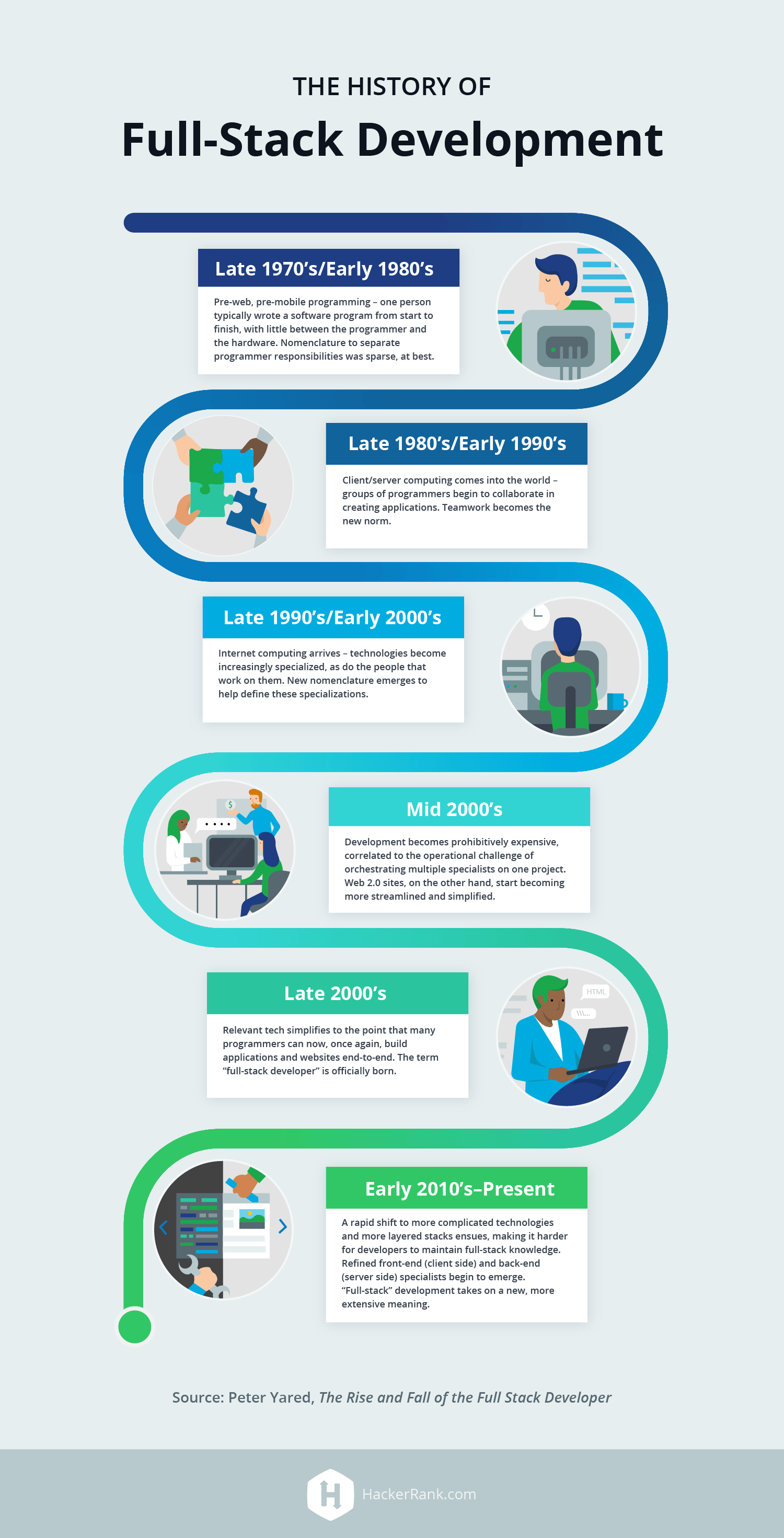Index Surge: Amplifying Your Insights
Stay updated with the latest trends and news across various industries.
Full-Stack Wizards: Building Dreams One Line of Code at a Time
Unlock the secrets of full-stack development and turn your dreams into reality—one line of code at a time! Join us on the coding adventure!
Understanding the Role of a Full-Stack Developer: Skills and Tools
A full-stack developer is a versatile professional who is proficient in both front-end and back-end technologies. This role requires a comprehensive understanding of various programming languages, frameworks, and tools that enable them to develop complete web applications. Key skills for a full-stack developer include proficiency in languages such as HTML, CSS, and JavaScript for front-end development, as well as server-side languages like Node.js, Python, or Ruby for back-end development. Additionally, familiarity with databases is essential, with options ranging from SQL-based systems like PostgreSQL to NoSQL databases like MongoDB.
In addition to language proficiency, a full-stack developer must also be adept at using a variety of tools and frameworks to streamline their workflow. Popular frameworks like React.js and Angular.js are commonly used for building dynamic user interfaces, while tools like Docker and Kubernetes facilitate smooth deployment and management of applications. Moreover, version control systems such as Git are crucial for collaborating with other developers and maintaining project integrity. Mastery of these skills and tools not only enhances a developer's versatility but also improves their productivity in a fast-paced development environment.

The Journey of Building a Web Application: From Concept to Deployment
The journey of building a web application begins with a solid concept. This initial phase involves identifying a problem that needs solving and brainstorming innovative solutions. Once the idea is established, it’s essential to conduct market research to evaluate the demand and competition. By creating a comprehensive project outline, including features and functionalities, developers can set a clear roadmap. The next step is to gather feedback through sketches or prototypes, which helps in refining the concept further and aligning it with user expectations.
After finalizing the concept, the next stage is implementation. This involves selecting the right technology stack, designing the user interface, and coding the application. A structured approach using agile methodologies allows for iterative development and quick adjustments based on testing and user feedback. Finally, the deployment phase involves launching the application into a live environment, often accompanied by a marketing strategy to attract users. Continuous monitoring and updates are crucial to ensure the web application not only meets user needs but also adapts to ever-changing market dynamics.
Common Myths About Full-Stack Development Debunked
Full-stack development is often surrounded by a cloud of misconceptions that can mislead aspiring developers. One common myth is that a full-stack developer must be a master in every technology. In reality, while<> full-stack developers should have a working knowledge of both front-end and back-end technologies, they do not need to be experts in all areas. Most successful full-stack developers possess a solid understanding of the basics in various frameworks and languages, allowing them to effectively collaborate with specialists when necessary.
Another widespread myth is that full-stack development is a one-size-fits-all approach to web development. Some believe that full-stack developers are primarily focused on building complete web applications solo, which is far from the truth. In practice, full-stack developers play a crucial role in teams, contributing to specific parts of a project while providing valuable insights across domains. Their versatility enables them to adapt to different stages of development and streamline communication between front-end and back-end teams.